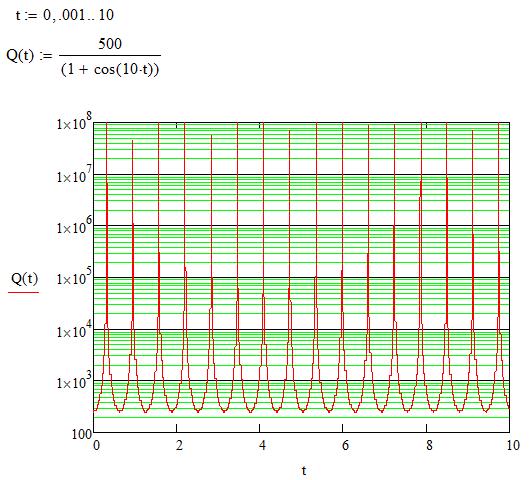TAGGED: transient, transient-analysis
-
-
October 14, 2019 at 2:35 pm
jecmubisa
Subscriberplease help, How can i generate heat flux on the square surface (180 mm by 180 mm) bounded by the equation Q= q/2(1+cos wt) has initial condition where q= 1000 w and t = 10s
-
October 14, 2019 at 6:57 pm
-
October 18, 2019 at 4:15 pm
jecmubisa
SubscriberThank you for your quick response, yes i mean exactly what you have simulated above sir. please can you guide me how can do it in Ansys transient thermal analysis
-
October 22, 2019 at 3:53 pm
jecmubisa
SubscriberThank you for your quick responce Iam kindly asking for the guidance on how you generated those heat flux above
-
October 22, 2019 at 8:25 pm
peteroznewman
SubscriberThe problem with the function you defined is it become infinite at each of those high points. That is not realistic.
Can you develop a modified function that does not include infinity as a periodic value?
In the plot from my previous post, I used MathCAD where the cos() function takes input in radians.
In ANSYS Mechanical, the cos() function takes input in degrees therefore there must be a 180/pi = 57.296 conversion factor included.
Just set the units to SI, add a Heat Flow to the face and change the Magnitude to Function and type in the equation.
Note that the maximum value on the plot depends on the Number Of Segments as the samples get closer to the values that compute infinity.
-
- The topic ‘TRANSIENT THERMAL ANALYSIS’ is closed to new replies.


- LPBF Simulation of dissimilar materials in ANSYS mechanical (Thermal Transient)
- Convergence error in modal analysis
- APDL, memory, solid
- Meaning of the error
- How to model a bimodular material in Mechanical
- Simulate a fan on the end of shaft
- Nonlinear load cases combinations
- Real Life Example of a non-symmetric eigenvalue problem
- How can the results of Pressures and Motions for all elements be obtained?
- Contact stiffness too big

-
4167
-
1487
-
1363
-
1194
-
1021

© 2025 Copyright ANSYS, Inc. All rights reserved.









